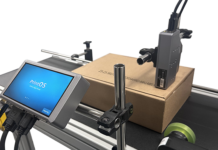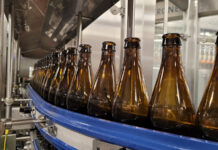
By Paul Wilson, MD, Scorpion Vision Ltd
Artificial Intelligence (AI) has arrived in the fresh produce industry and the results are astounding: waste associated with inaccurate trimming of vegetables is being slashed to zero and flawless product presentation is now a reality.
The root of the problem
Topping and tailing vegetables such as leeks, sprouts, carrots, parsnips and swedes is dirty work. Somebody has to do it but, increasingly, nobody wants to. This situation has been exacerbated in recent years as labour availability has plummeted, prompting the vegetable processing industry to look to automation.
Optical trimming systems guided by classic 3D machine vision technology have, to date, presented the best available option for automating this operation. However, they represent a compromise rather than a solution.
Classic 3D machine vision can only look for features that conform to a pattern or shape that is expected: the tip of a carrot or the stem plate on a leek, for example. However, vegetables don’t come in a fixed size, shape or colour, and this inherent variability translates to compromised cutting performance.
Taking leeks as an example, with an automation platform that relies on classic machine vision, just 60% of processed leeks will be cut at exactly the correct point. The rest will either be cut roughly, at a poor angle or slightly too short or long. Some may be written off altogether or not cut at all. This level of waste is unacceptable from a commercial and an environmental standpoint.
Enter AI…
The arrival of AI has introduced a new world of opportunity for revolutionising the performance and efficiency of camera-driven cutting systems. In the leek trimming example, it can be difficult to determine the stem plate when it is obscured by roots or other debris. Not for a camera with AI, which confers the ability to look at and analyse each individual vegetable before making a decision on how to process it. The machine simply needs to be shown some examples of the stem plate in a variety of conditions and it will learn what to look for, enabling it to formulate its own conclusion about what it is seeing.
AI does this by augmenting classic computer vision algorithms with models called neural networks. When a computer receives an image, machine vision software compares that image data with a neural network model. This process, called deep learning inference, allows computers to recognise very subtle differences.
The net result is much more robust image processing. Stereo vision will enable the real-world dimensions of the product to be detected in the X, Y and Z axes, but overlaying AI enables the camera to recognise features that it wouldn’t normally. A machine vision system that utilises AI can achieve repeatability of 99%, yielding a return on investment in a matter of months through waste reduction and yield improvement alone.
Off-the-shelf cameras: a false economy
Off-the-shelf cameras with built in AI are widely available and attractive from a cost perspective but won’t match the levels of repeatability that we can guarantee with our bespoke systems. Most will be lucky to achieve 80% reliability. That is because our experienced optical and automation engineers work together to build application-specific systems from the ground up. The starting point is the conception of a stereo camera array that can be used by the system’s software to create an electronic 3D model of the vegetable. This 3D image processing is then combined with AI to power intelligent objective decision making and incorporated into Scorpion’s proven automation platform.
Besides leek trimming, these are some of the applications in which Scorpion excels:
- Lettuce decoring: a 3D lettuce decorer analyses the lettuce in real time, calculates the position of the heart and directs a robot to extract it with an ultrasonic blade.
- Sprout trimming: sprouts have to be optimally cut so that only the outer layer of leaves falls off. This level of precision can only be achieved with bespoke AI as opposed to an off-the-shelf camera with AI.
- Carrot batoning: using 3D vision in tandem with AI allows the carrot to be measured up before it is batoned to eliminate any margin for error and waste.
- Swede slicing: similar in principle to the leek trimming application, this system deploys robots equipped with AI-optimised 3D machine vision to top and tail swedes quickly and accurately.
Scorpion Vision Ltd’s advanced stereo vision and neural network solution, the Scorpion 3D Neural Camera, can achieve repeatable precision when trimming vegetables. Combining 3D imaging with AI translates directly to bottom line benefits for farmers, processors and packers through higher yields and reduced reliance on manual labour. It also allows these businesses to guarantee unprecedented product presentation and deliver on sustainability metrics as waste resulting from inaccurate cutting is slashed to virtually zero.













